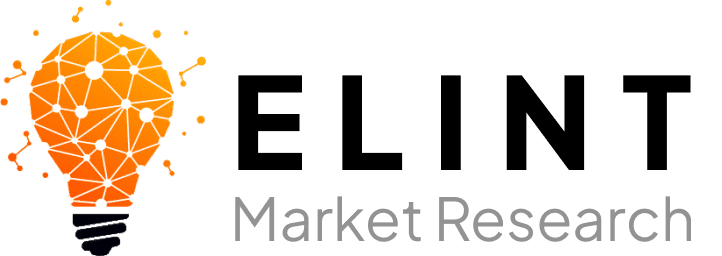DESCRIPTION
Global Vanillin Market Size
The statistical profile of the vanillin market paints a compelling picture, indicating an exceptionally bullish outlook. According to the latest research report of ELINT Market Research, the market stands firm with significant performance in 2022, with a monetary worth of approximately $0.63 billion. The anticipated growth trajectory, which predicts a CAGR of 7% from 2023 to 2026, adds to this ongoing exceptional performance. The consistent results are the consequence of an equilibrium of factors that all contribute to the growth of the vanillin industry. Notably, the rising global demand for vanillin reflects an increasing appreciation and desire for this critical ingredient.
According to a comprehensive global research study, the marketplace for organic products in the United Kingdom reached USD 2 billion between 2021 and 2022, accounting for around 3.2% of global demand for such items. It indicates a significant preference for natural and organic components, putting vanillin well in the market landscape. The surge in consumer preference for organic products, combined with vanillin’s inherent versatility in various applications, indicates a stable and continued future growth trajectory for the vanillin industry.
Vanillin Market Definition
Vanillin, a natural or manufactured element, is the primary flavored component of vanilla beans. The vanillin industry includes manufacturing, distributing, and consuming this versatile component, which has a broad scope in various sectors such as food, drinks, pharmaceuticals, and cosmetics.
Vanillin Market Drivers
- Food and Beverage Industry Demand:
The vanillin industry witnesses high traction due to the demand for natural and artificial flavors in the food and beverage sectors. The ability of vanillin to enhance flavor characteristics and reproduce vanilla flavor without the expense of actual vanilla beans adds considerably to its economic success.
- Expanding Pharmaceutical Applications:
Vanillin’s antimicrobial properties and ability to mask the bitter taste of many medications drive its use in the pharmaceutical sector. Vanillin is becoming increasingly popular as healthcare practitioners seek more appealing formulations.
- Consumer Inclination Towards Natural Products:
Natural vanillin extracted from vanilla beans is in high demand due to the global shift toward clean-label and natural products. This consumer preference has a significant impact on the vanillin industry.
Vanillin Market Challenges
- Fluctuating Vanilla Prices:
The vanillin sector is highly vulnerable to fluctuations in vanilla prices because natural vanillin derives from vanilla beans. Any supply chain disturbances may result in price volatility, threatening market stability.
Market players witness challenges due to regulatory frameworks surrounding the use of synthetic vanillin and the demand for accurate labeling. Stringent restrictions controlling the use of artificial flavors may impact industry development in particular areas.
Vanillin Market Opportunities
- Rising Popularity of Plant-Based Alternatives:
The increasing popularity of plant-based alternatives and increased demand for vegan products presents an appealing opportunity for plant-derived vanillin. Market actors can capitalize on this trend by investigating sustainable sourcing and production methods.
- Technological Advancements in Production:
Biotechnology and fermentation process innovations provide prospects for the vanillin business to produce bio-synthetic vanillin, satisfying both customer desire for organic components and regulatory concerns about synthetic additives.
Vanillin Market Trends
- Clean-Label Vanillin Products:
There is a clear market trend toward clean-label vanillin products, with manufacturers emphasizing transparency in component sourcing and processing procedures.
- Premiumization of Vanillin:
The increased popularity of premium vanillin products, usually made from high-quality vanilla beans or extracted via innovative procedures, reflects a growing customer willingness to pay a premium for higher flavor sensations.
Vanillin Market Segmentation
- Source: Based on the source, the research report classifies the market into natural vanillin (vanilla beans) and synthetic vanillin (chemical synthesis).
- End-User: The research report covers the food and beverage industry, pharmaceutical industry, cosmetic industry, and others.
- Application: The research report divides the market into Food and Beverages, Pharmaceuticals, Cosmetics, and Others.
Regional Dynamics
In 2022, China became a vanillin production and export powerhouse, accounting for nearly 40% and 50% of the global market share, respectively. Given its dual significance, China is a significant player in the vanillin market, impacting supply chain dynamics and worldwide trade patterns. The country’s economic strength is attributable to advanced production facilities and technological expertise in synthetic vanillin manufacture. This influence is visible globally, generating concerns regarding market flexibility and diversification strategies. Pricing for synthetic vanillin in China is stable at around $11/kg, demonstrating the country’s significant production potential. Natural vanillin prices have risen significantly, reaching $2,700/kg due to a higher demand for natural flavors and less feedstock availability.
The vanillin market in North America has grown substantially as consumer desire for natural flavors and perfumes has grown. With an increasing emphasis on environmentally sensitive and sustainable production practices, Europe is an essential market for vanillin. The European Union’s severe food additive regulations have encouraged producers to investigate natural and bio-based vanillin replacements.
Engagement Models
The vanillin market witnesses distinction by various engagement models catering to stakeholders’ multiple needs. Two basic models dominate the industry: Short-term synthetic contracts, which typically last six months, focus on the efficient production and delivery of synthetic vanillin to meet current market demands and changes. These contracts offer industrial flexibility and rapid adaptability to changing market demands. Long-term natural agreements, on the other hand, are for 12 months and are intended solely for producing and supplying natural vanillin, promoting stable, long-term partnerships between suppliers and manufacturers. These contracts adhere to sustainable sourcing procedures, meeting customer demand for natural and clean-label products. These interaction approaches, when combined, offer a comprehensive method to navigating the volatile vanillin business, offering solutions targeted to both short-term responsiveness and long-term sustainability.
Recent Activities in the Vanillin Market
- Solvay, a global leader in specialized chemicals and novel materials, has introduced the industry’s first ISCC PLUS-certified mass balance vanillin. Obtaining ISCC PLUS accreditation by Solvay for their mass balancing vanillin represents a significant step forward in integrating corporate activities with environmentally conscious ideals.
- Vanilla Vida is always looking for new locations for its high-tech vanilla-producing firm in the United States. This endeavor aims to meet the increasing demand for high-quality vanilla and transform traditional agricultural processes via cutting-edge technology.
Vanillin Market Players
The vanillin market is competitive, with leading companies driving industry expansion. Borregaard AS, a primary provider of high-quality wood-derived vanillin noted for its commitment to environmental practices, is a key contributor. Evolva distinguishes itself by its innovative biotechnological solutions and devotion to developing bio-based vanillins. Solvay, a well-known multinational corporation, offers various industries a comprehensive range of vanillin solutions. Symrise, a flavor and fragrance market pioneer, specializes in manufacturing vanillin for applications in food, beverages, and personal care products, exhibiting expertise in the field.
- What is the current valuation of the global vanillin market?
The global vanillin industry has shown high growth and revenue generation in 2022, with the market’s valuation surpassing USD 0.63 billion.
2. Which are the most promising factors behind the exponential growth of the vanillin market?
A massive surge in demand for natural flavor enhancers, an increasing number of start-ups, favorable regulatory policies, and increasing product diversification by manufacturers drive market growth.
3. Which are the major revenue-contributing sectors for the vanillin industry?
The food & beverage industry and pharmaceutical market are the leading force for the vanillin industry. It has a broad scope as it helps to improve overall taste profiles and fulfills consumer satisfaction by acting as a flavor enhancer.
4. Which regional markets are in a dominant position in the vanillin market?
China leads the Asia-Pacific region regarding revenue share in the vanillin industry, accounting for over 40% of production and 50% of exports, respectively.
 Cart is empty
Cart is empty
